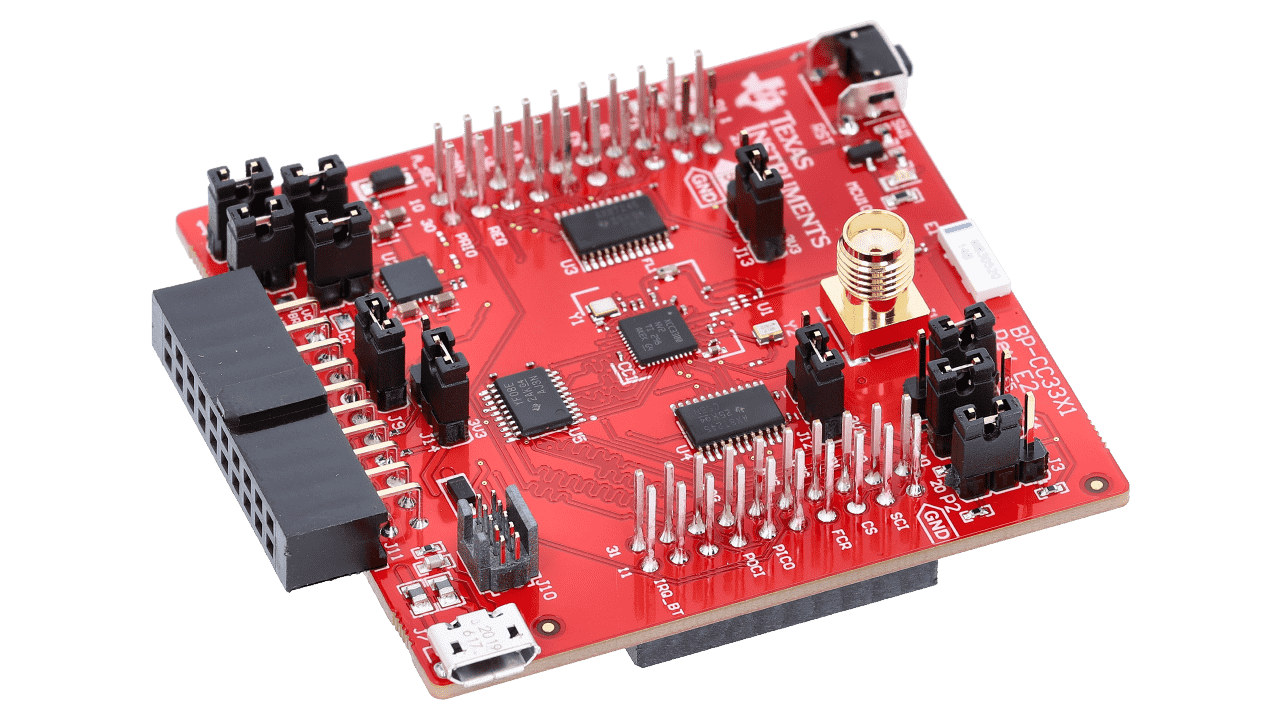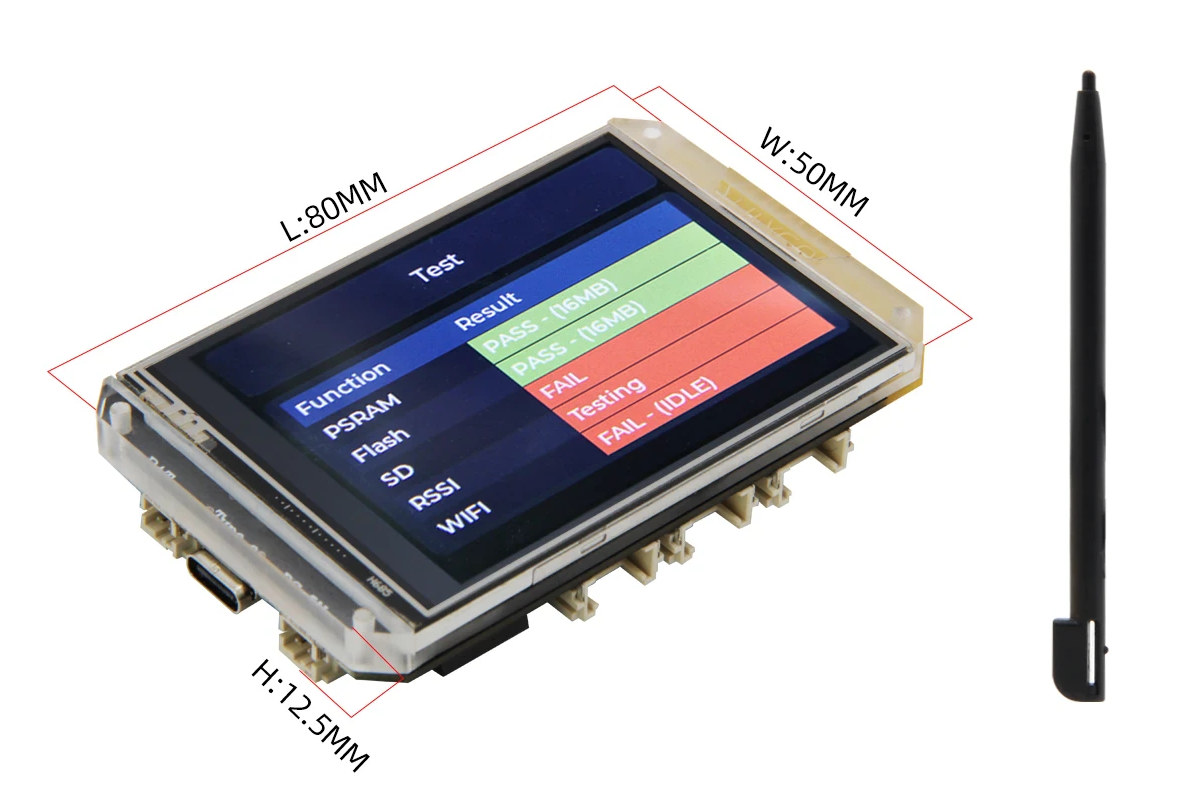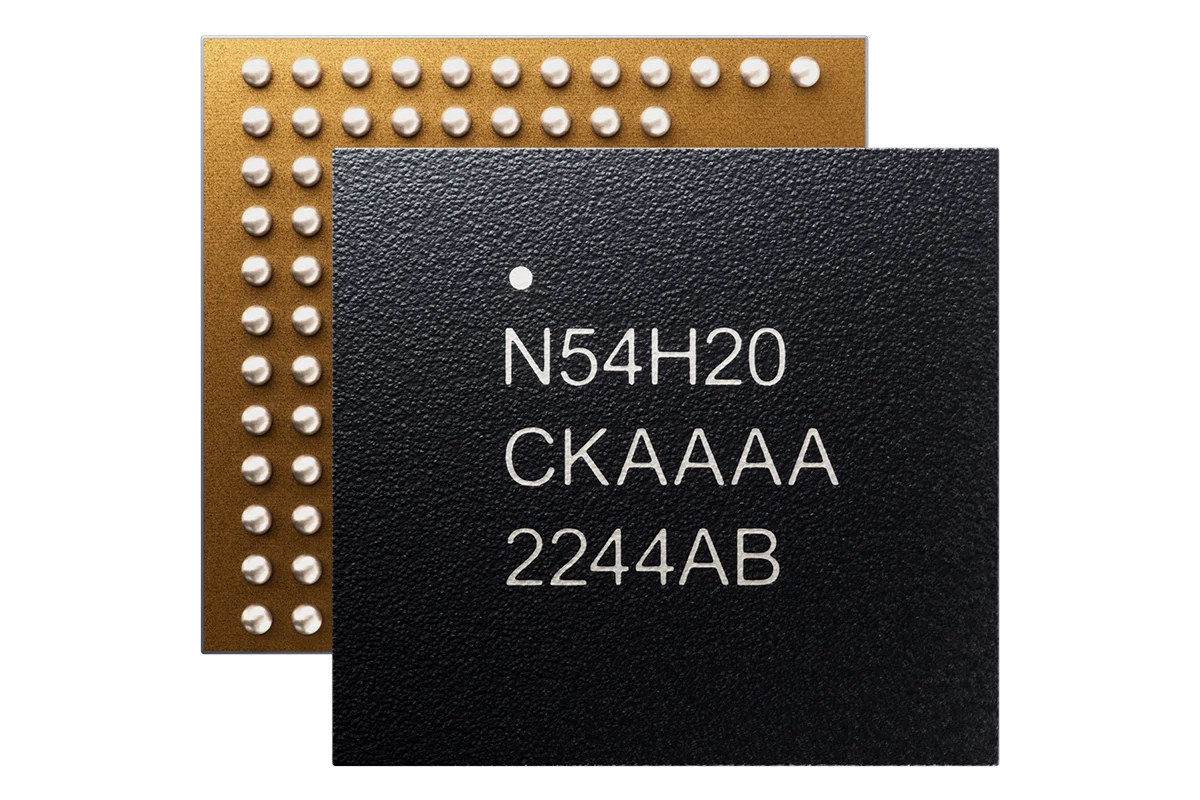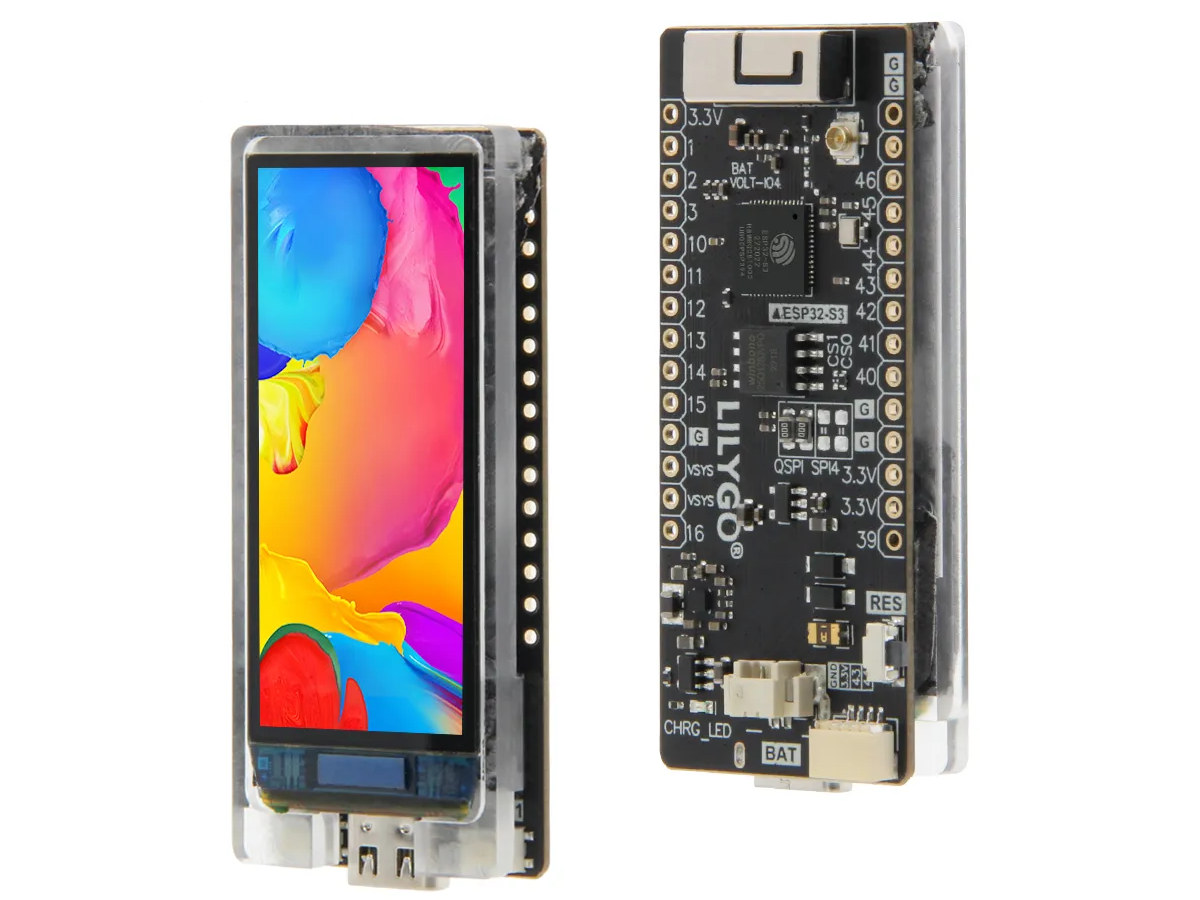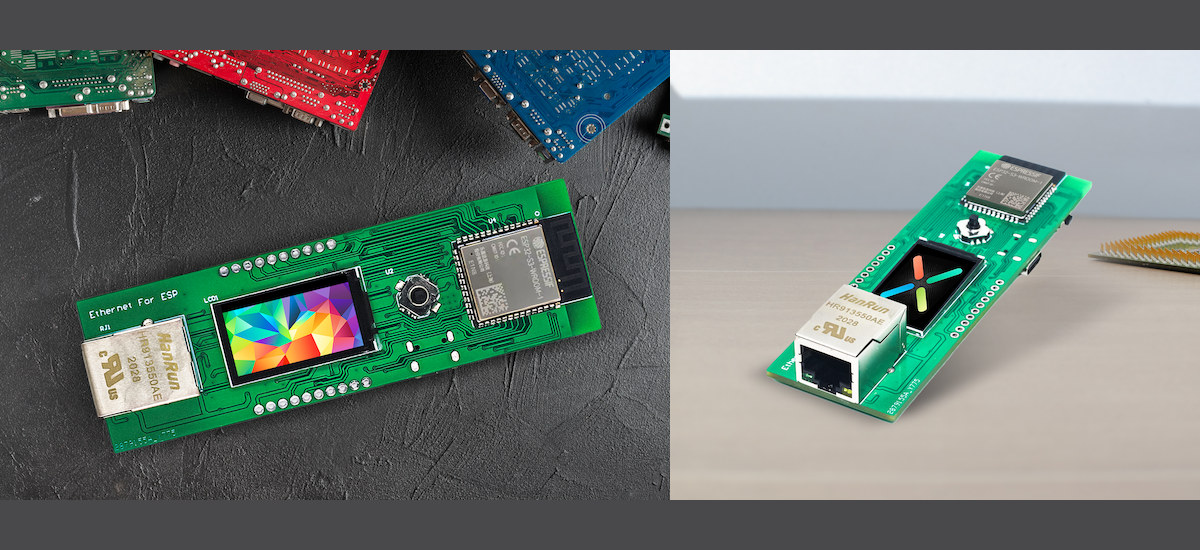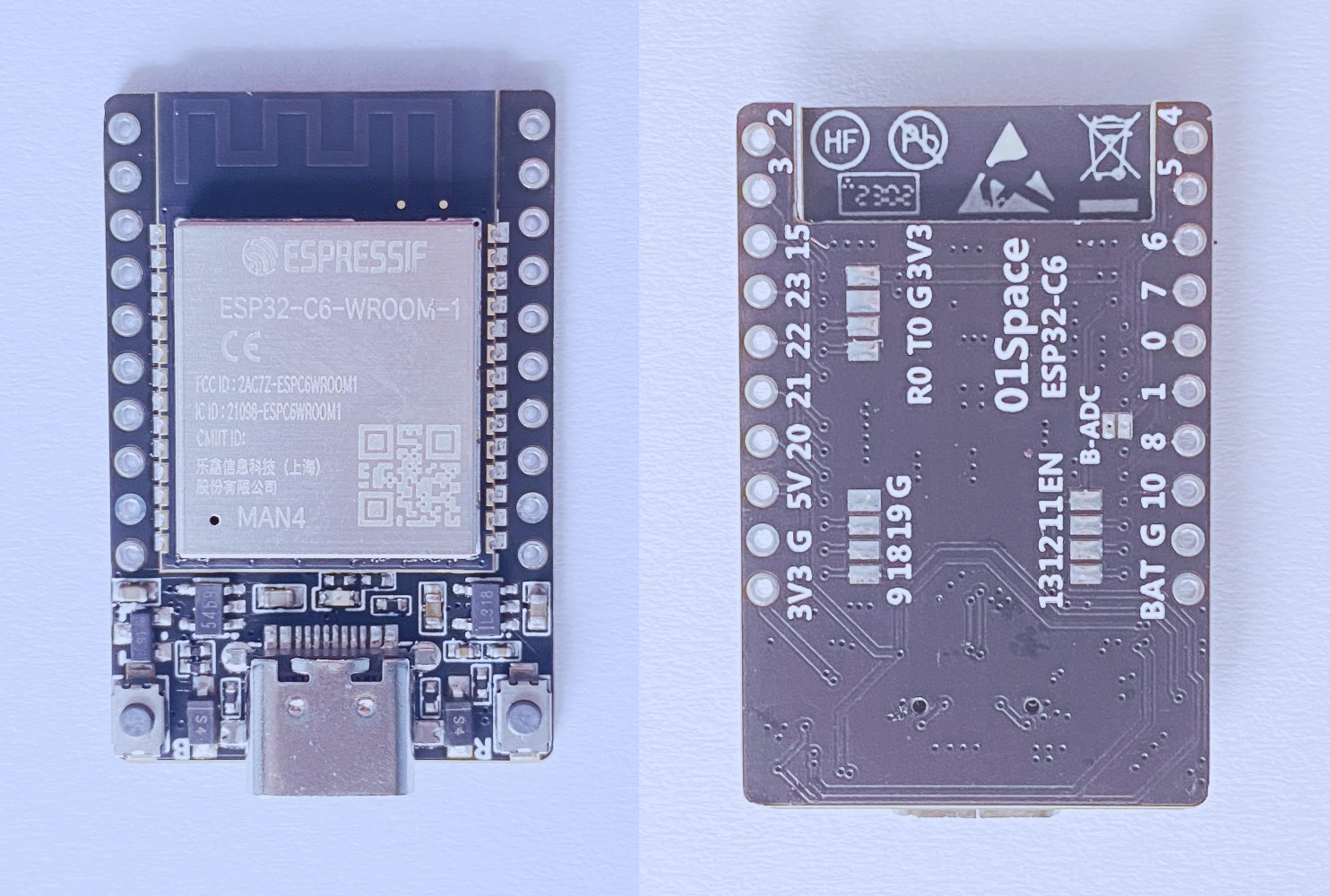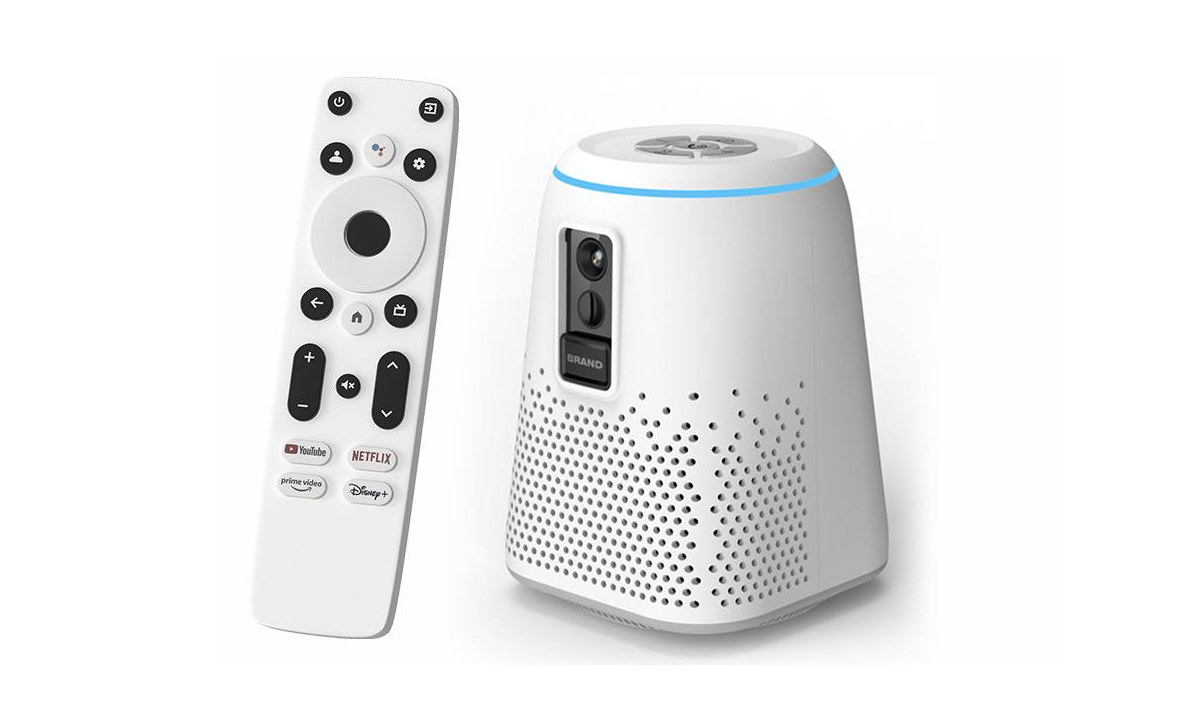Texas Instruments has unveiled the SimpleLink CC33xx family of Wi-Fi 6 companion IC with optional Bluetooth 5.3 Low Energy designed to be connected to a microcontroller (MCU) or a microprocessor (MPU) for secure and power-efficient IoT devices, The SimpleLink CC3000 supports 2.4 GHz WiFi 6, and interfaces over SDIO, SPI, and/or UART to the host system, while the SimpleLink CC3301 also adds support for Bluetooth 5.3 LE. Both chips can operate in high-temperature environments up to 105ºC. Texas Instruments CC3300/CC3301 specifications: Wireless 2.4 GHz WiFi 6 (802.11ax) up to 50 Mbps; Support for TWT and OFDMA, multirole (Access Point and Station) CC3301 only – Bluetooth 5.3 Low Energy up to 2 Mbps WiFi and Bluetooth COEX Host interface – 4-bit SDIO or SPI, and UART to external MCU or MPU Security – FW authentication and anti-rollback protection, WPA2/WPA3, Secured host interface Pacakge – 40-pin QFN package (5×5 mm) Temperature range […]
T-HMI ESP32-S3 board comes with an 2.8-inch touchscreen color display, three Grove expansion connectors
Lilygo has launched yet another ESP32-S3 board with an integrated display, but the T-HMI has a larger 2.8-inch color display and a resistive touch panel suitable for HMI (Human Machine Interfaces). It is also equipped with three Grove connectors for expansion with sensors or actuators. Like all the recent ESP32-S3 boards from Lilygo, the T-HMI features the ESP32-S3R8 WiFi 4 and Bluetooth MCU with 8MB PSRAM, as well as a 16MB SPI flash, a microSD card slot, a few buttons, and power from USB or a LiPo battery. Lilygo T-HMI board specifications: Wireless MCU – Espressif Systems ESP32-S3R8 dual-core Tensilica LX7 @ up to 240 MHz with vector instructions for AI acceleration, 512KB RAM, 8MB PSRAM, wireless connectivity Storage – 16MB SPI flash, microSD card socket Connectivity via ESP32-S3 2.4 GHz 802.11 b/g/n Wi-Fi 4 with 40 MHz bandwidth support Bluetooth Low Energy (BLE) 5.0 connectivity with long-range support, up […]
Embedded Open Source Summit 2023 schedule – Zephyr OS, Security, IoT, Embedded Linux, and more
The Linux Foundation has just announced the full schedule for the Embedded Open Source Summit, which will take place on June 27-30, 2023 in Prague, Czech Republic, as well as virtually starting on June 26. Over 175 sessions, birds of a feather (BoF) tracks, and workshops related to embedded and open-source innovation will be presented at the event itself comprised of six micro conferences: Automotive Linux Summit Europe, Embedded IoT Summit, Embedded Linux Conference, LF Energy Embedded Summit, Safety-Critical Software Summit, and Zephyr Project Developer Summit. Even though I’m not going to attend personally, I’ve gone through the schedule to create my own little virtual schedule with some sessions relevant that should be interesting to me and hopefully to CNX Software readers. Monday, June 26 (Virtual sessions) The first day of the event will have a Yocto Dev training in the morning, and a bunch of virtual sessions that are […]
Nordic Semi nRF54H20 Cortex-M33 + RISC-V wireless SoC supports Bluetooth 5.4, LE Audio, Bluetooth mesh, Thread, Matter, and more
Nordic Semi nRF54H20 is a 320 MHz multiprotocol wireless SoC with several Arm Cortex-M33 and RISC-V cores, support for Bluetooth 5.4 and greater with features like LE Audio and Bluetooth mesh, as well as Thread, Matter, and so on. It is the first part of the fourth generation nRF54 family manufactured with a 22nm process, and its application processor doubles the processing power (2x CoreMark) of the Arm Cortex-M33 application core in the nRF5340 SoC and embeds up to 2MB flash, 1MB SRAM. nRF54H20 preliminary specifications and highlights: CPU Application core – Arm Cortex-M33 @ up to 320 MHz with 2 MB Flash + 1MB SRAM Network core – Arm Cortex-M33 Several RISC-V cores (for low power?) Wireless Bluetooth 5.4 LE with direction-finding, Bluetooth mesh, LE audio, etc… 802.15.4 radio for Thread, Matter -100 dBm RX sensitivity @ 1 Mbps for Bluetooth LE Up to 10 dBm TX power New […]
T-Display-S3 AMOLED – An ESP32-S3 board with a 1.9-inch AMOLED Display
There are plenty of ESP32 series boards with display usually TFT or E-Ink, but I don’t think I’ve ever seen one with an AMOLED display and that’s what Lilygo is offering with the “T-Display-S3 AMOLED” board equipped with an ESP32-S3 WiFi and Bluetooth microcontroller and a 1.9-inch AMOLED display. The new board is almost the same as the T-Display-S3 board introduced last year, except for a display with higher resolution, more vibrant colors, and a wider viewing angle, plus a 3D antenna, and a few extra I/Os. T-Display-S3 AMOLED specifications: Wireless MCU – Espressif Systems ESP32-S3R8 dual-core Tensilica LX7 @ up to 240 MHz with vector instructions for AI acceleration, 512KB RAM, 8MB PSRAM, wireless connectivity Storage – 16MB flash Connectivity via ESP32-S3 2.4 GHz 802.11 b/g/n Wi-Fi 4 with 40 MHz bandwidth support Bluetooth Low Energy (BLE) 5.0 connectivity with long-range support, up to 2Mbps data rate. 3D antenna […]
ESPi Ethernet & info display board comes with ESP32-S3 module or Raspberry Pi Pico W board (Crowdfunding)
SB Components’ ESPi is a WiFi-enabled Ethernet board with a 1.14-inch information color display either coming with an ESP32-S3 WiFi and Bluetooth module or designed as a carrier board for the Raspberry Pi Pico W board. I have no idea who needs this, but the ESPi board looks cute and can be used as a 10/100Mbps Ethernet to WiFi (or BLE) gateway with a small TFT display, and there’s also a small joystick on the board to control a potential menu or user interface rendered in the display. ESPi board specifications: Module/Board (one or the other) ESP32-S3-WROOM-1 module with ESP32-S3 dual-core LX7 microprocessor @ up to 240 MHz with Vector extension for machine learning, up to 16MB flash, up to 8MB PSRAM, WiFi 4, and Bluetooth 5 with LE/Mesh Raspberry Pi Pico W board with Raspberry Pi RP2040 dual-core Cortex-M0+ microcontroller @ 133 Mhz with 264KB RAM, 8MB SPI flash, […]
Tiny ESP32-C6 IoT board supports 2.4 Ghz WiFi 6, Bluetooth 5.0 Low Energy, and 802.15.4 radio
01Space has designed a tiny ESP32-C6 IoT board with WiFi 6 and Bluetooth LE 5.0 connectivity built around the ESP32-C6-WROOM-1 wireless module, and exposing I/Os through two 10-pin headers. Espressif launched their ESP32-C6 modules and development kits last January, and the 01Space is the first third-party ESP32-C6 board we’ve covered. It’s a minimal board with a wireless module, a USB Type-C port for power and programming, and Reset and Boot buttons. 01Space ESP32-C6 board specifications: Wireless module – ESP32-C6-WROOM-1-N4 module with Espressif Systems ESP32-C6 single core 32-bit RISC-V processor @ 160 MHz with 2.4 Ghz WiFi 6 1T1R, Bluetooth LE 5.0, and 802.15.4 radio for Zigbee/Thread/2.4GHz proprietary Storage – 4MB SPI flash Onboard PCB antenna USB – 1x USB Type-C port for power and programming I/Os – 2x 10-pin headers with UART, I2C, I2S, RMT (TX/RX), LED PWM, USB Serial/JTAG controller, etc… 5V, 3.3V, VBAT, GND Misc – Reset and […]
Videostrong HC1 Home Care Hub for the elderly serves as Smart Speaker, Smart Home gateway, video phone
Videostrong HC1 Home Care Hub is a Smart Home/IoT gateway designed for the elderly that also serves as a smart speaker with 10-meter far-field voice recognition, a video phone with a video built-in camera and speaker, and a 4K Android TV box. The system is based on an Amlogic S905Y4 quad-core Cortex-A35 processor coupled with up to 4GB RAM and 64GB RAM, supports Ethernet, WiFi, Bluetooth, Zigbee, and LoRa, WiFi, and Bluetooth connectivity, and offers both HDMI 2.1 video output, and HDMI 2.0 video input. HC1 specifications: SoC – Amlogic S905Y4 quad-core Arm Cortex-A35 @ 2.0GHz with Arm Mali-G31 MP2 GPU with OpenGL ES 3.2 support System Memory – 2GB or 4GB RAM Storage – 8GB, 16GB, 32GB, or 64GB eMMC flash Video Output – HDMI 2.1 port up to 4Kp60 Input Built-in 1920×1080 camera with 90° wide angle, manual cover, adjustable angle HDMI 2.0 port up to 4Kp60 Audio […]


